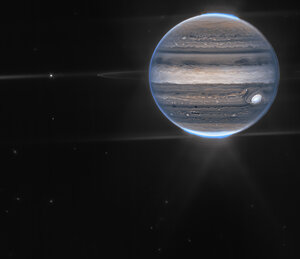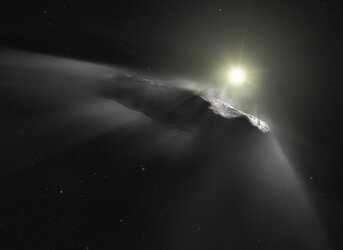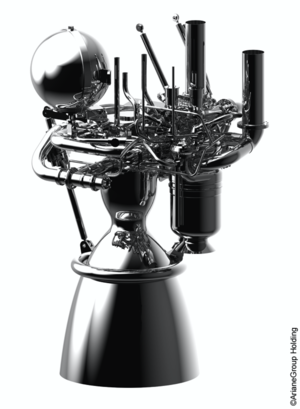Accept all cookies Accept only essential cookies See our Cookie Notice

About ESA
The European Space Agency (ESA) is Europe’s gateway to space. Its mission is to shape the development of Europe’s space capability and ensure that investment in space continues to deliver benefits to the citizens of Europe and the world.
Highlights
ESA - United space in Europe
This is ESA ESA facts Member States & Cooperating States Funding Director General Top management For Member State Delegations European vision European Space Policy ESA & EU Space Councils Responsibility & Sustainability Annual Report Calendar of meetings Corporate newsEstablishments & sites
ESA Headquarters ESA ESTEC ESA ESOC ESA ESRIN ESA EAC ESA ESAC Europe's Spaceport ESA ESEC ESA ECSAT Brussels Office Washington OfficeWorking with ESA
Business with ESA ESA Commercialisation Gateway Law at ESA Careers Cyber resilience at ESA IT at ESA Newsroom Partnerships Merchandising Licence Education Open Space Innovation Platform Integrity and Reporting Administrative Tribunal Health and SafetyMore about ESA
History ESA Historical Archives Exhibitions Publications Art & Culture ESA Merchandise Kids Diversity ESA Brand Centre ESA ChampionsLatest
Space in Member States
Find out more about space activities in our 23 Member States, and understand how ESA works together with their national agencies, institutions and organisations.
Science & Exploration
Exploring our Solar System and unlocking the secrets of the Universe
Go to topicAstronauts
Missions
Juice Euclid Webb Solar Orbiter BepiColombo Gaia ExoMars Cheops Exoplanet missions More missionsActivities
International Space Station Orion service module Gateway Concordia Caves & Pangaea BenefitsLatest
Space Safety
Protecting life and infrastructure on Earth and in orbit
Go to topicAsteroids
Asteroids and Planetary Defence Asteroid danger explained Flyeye telescope: asteroid detection Hera mission: asteroid deflection Near-Earth Object Coordination CentreSpace junk
About space debris Space debris by the numbers Space Environment Report In space refuelling, refurbishing and removingSafety from space
Clean Space ecodesign Zero Debris Technologies Space for Earth Supporting Sustainable DevelopmentLatest
Applications
Using space to benefit citizens and meet future challenges on Earth
Go to topicObserving the Earth
Observing the Earth Future EO Copernicus Meteorology Space for our climate Satellite missionsCommercialisation
ESA Commercialisation Gateway Open Space Innovation Platform Business Incubation ESA Space SolutionsLatest
Enabling & Support
Making space accessible and developing the technologies for the future
Go to topicBuilding missions
Space Engineering and Technology Test centre Laboratories Concurrent Design Facility Preparing for the future Shaping the Future Discovery and Preparation Advanced Concepts TeamSpace transportation
Space Transportation Ariane Vega Space Rider Future space transportation Boost! Europe's Spaceport Launches from Europe's Spaceport from 2012Latest

Close-up of galaxy distribution in the Spiderweb Protocluster (NIRCam)
Thank you for liking
You have already liked this page, you can only like it once!
Using the NASA/ESA/CSA James Webb Space Telescope, an international team of astronomers have found new galaxies in the Spiderweb protocluster. Their properties reveal the growth of galaxies in these large cosmic cities, with the finding that gravitational interactions in these dense regions are not as important as previously thought.
With the use of Webb’s capabilities, astronomers have now sought to better understand this protocluster and to reveal new galaxies within it. Infrared light passes more freely through cosmic dust than visible light, which is scattered by the dust. Because Webb can see well in the infrared, scientists used it to observe regions of the Spiderweb that were previously hidden to us by cosmic dust, and to find out to what degree this dust obscures them.
This annotated image shows the galaxy distribution in the Spiderweb protocluster as seen by Webb’s NIRCam (Near-InfraRed Camera). The galaxies are annotated by white circles, and the collection of gravitationally-bound galaxies is identified in the centre of the image. A selection of these galaxies are featured as individual close-ups at the bottom of the image.
[Image description: This annotated image shows hundreds of galaxies appearing in this view, which is set against the black background of space. There are many overlapping objects at various distances. Dozens of galaxies are individually identified with white circles, and a large white circle in the centre of the image highlights the collection of gravitationally-bound galaxies in the field. The bottom of the image shows a close-up of seven of these central galaxies. The objects visible in the image include large, blue foreground stars, some with eight diffraction spikes, and white and pink spiral and elliptical galaxies, as well as numerous tiny orange dots that appear throughout the scene.]
-
CREDIT
ESA/Webb, NASA & CSA, H. Dannerbauer -
LICENCE
CC BY 4.0 INT or ESA Standard Licence
(content can be used under either licence)

Spiderweb Protocluster (NIRCam)

No tricks, just treats (M83 NIRCam image)

JADES-GS-z13-1 (NIRCam close-up)

Jupiter showcases aurorae, hazes (NIRCam widefield view)















 Germany
Germany
 Austria
Austria
 Belgium
Belgium
 Denmark
Denmark
 Spain
Spain
 Estonia
Estonia
 Finland
Finland
 France
France
 Greece
Greece
 Hungary
Hungary
 Ireland
Ireland
 Italy
Italy
 Luxembourg
Luxembourg
 Norway
Norway
 The Netherlands
The Netherlands
 Poland
Poland
 Portugal
Portugal
 Czechia
Czechia
 Romania
Romania
 United Kingdom
United Kingdom
 Slovenia
Slovenia
 Sweden
Sweden
 Switzerland
Switzerland

























